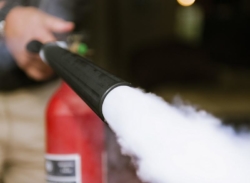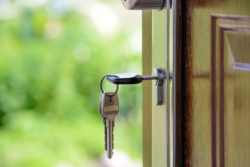In the USA, residential properties remain the most likely place to experience a financially damaging or deadly fire. According to FEMA statistics, residential fires are responsible for 77% of all fire deaths, 76% of injuries and 49.7% of all financial losses. As private homes are not restricted to the same regulations and safeguards as commercial properties, fire safety is not as easy to secure. With the advent of smart technology, this process is becoming easier – with demonstrable results.
An integrated home system
Smart technology is often tended towards improving convenience. Frequently, this is through providing individuals with tools to manage otherwise inaccessible parts of their day-to-day life. This is now being expanded to fire care, where an integrated fire alarm system can be tied to a home hub or other smart center within the home to provide live updates to users. Using sensors and indicators across home fire safety equipment, such as alarms, monoxide detectors and the thermostat, homeowners or emergency services can be alerted long before a fire is allowed to develop. Proprietors of such devices are also including reminders to preserve the effectiveness of fire safety equipment – according to the NFPA, Nest is one example of a device that gives regular reminders to replace alarm batteries.
Using data sets
The next logical step for fire prevention systems in the home is to begin trying to pre-empt adverse conditions. This is an approach that has been taken by many homeowners in California and similarly drought-stricken states in order to protect property and life ahead of time. Forbes report that the WIFIRE project at the University of California San Diego has introduced a process where weather data is collected in real-time and applied to a sophisticated mathematical model. Using this information, the university has successfully predicted the movement of potential fires. Taking this data to a smaller level, personal smart devices in the home could well harness this sort of data from local data sources and, comparing this against historical data, provide a live risk assessment of fire.
The move to green energy
Underpinning a culture of smart technology is the move towards green energy. An all-renewable energy ecosystem will consist of no gas, and homes will be powered entirely by electricity as a response. According to USA Today, this will see the wide proliferation of electric induction stoves in the home, which are far safer than their gas counterparts and can be operated with smart technology. With gas taken out of the home entirely, the risk of gas leaks, explosion, carbon monoxide leaks and fires is likely to be far lower. In that sense, smart technology is driving a wholesale move towards safer homes.
With FEMA now finding that there are 6.2% less house fires than a decade ago, the modern American home is safer than ever before, and smart technology has had a big part to play in this. Using big data and warning signs to provide advance warning of issues, homeowners nationally can feel confident that their home is protected.





